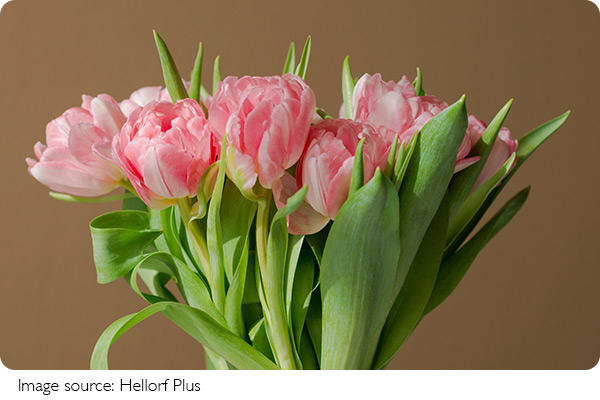The Tulip's Classic Charm

Tulip bouquet is a timeless symbol of beauty and elegance, known for its vibrant colors and graceful appearance.
Unlike many other flowers, tulips have an air of sophistication that can brighten up any room, whether as part of a grand arrangement or in a simple yet striking bouquet.
These delicate flowers, with their smooth petals and tall, slender stems, evoke a sense of freshness and renewal, making them popular in both decorative and celebratory contexts. The history of the tulip goes back centuries, with its origins traced to Central Asia. It was during the Ottoman Empire's reign that tulips gained significant popularity in the West, particularly in the 16th century.
The fascination with these flowers spread quickly across Europe, where they became a symbol of wealth and prestige.
In fact, during the famous Tulip Mania of the 1630s in the Netherlands, tulip bulbs were so highly prized that they were traded for outrageous sums of money. This brief period of speculative trading, though short-lived, cemented the tulip's place in cultural history.

When it comes to tulip bouquets, the diversity of color is one of their most captivating features. From the softest pastel shades to bold, saturated hues, tulips come in a range of colors that suit any occasion.
The most common colors include red, pink, yellow, and white, each carrying its symbolism. For instance, a bouquet of red tulips is often associated with passion and love, while white tulips can symbolize purity and forgiveness. Yellow tulips, on the other hand, are frequently linked to cheerfulness and friendship.
The versatile nature of tulips makes them an ideal flower for various events, from weddings and anniversaries to birthdays and even funerals. The shape of a tulip itself adds to its appeal. Its unique, bowl-like form, combined with the smooth texture of its petals, creates an elegant and refined appearance. While tulips may appear delicate, they are surprisingly hardy flowers, capable of lasting for up to a week or more when properly cared for.

Arranging a tulip bouquet requires a bit of artistry. The flowers can be grouped in a tightly packed, structured arrangement or loosely arranged to create a more natural, free-flowing look. Depending on the desired effect, you can mix tulips with other complementary flowers such as roses, lilies, or daisies.
The key is to balance the softness of the tulips with the other elements in the bouquet, ensuring that each flower is given space to shine. Adding greenery, such as fern leaves or ivy, provides texture and contrast, enhancing the bouquet's visual appeal. Tulips also have a fascinating relationship with the changing seasons. In spring, they burst into bloom with a sense of energy and vitality, representing the end of winter and the arrival of warmer days.
This association with spring is particularly evident in tulip festivals, such as the famous Tulip Time Festival in Holland, Michigan, where millions of tulips are on display, drawing visitors from around the world.
The sight of a tulip bouquet in full bloom can invoke a sense of renewal and hope, making it a thoughtful gift for someone experiencing a significant life transition, such as a new job or the birth of a child.
How To Make A Tulip Bouquet | Florist Vlog
Videos by Flowers and Kisses
Whether chosen for its vibrant colors, its delicate shape, or its timeless beauty, a tulip can brighten up any space and bring joy to those lucky enough to receive it!

 · Plant Team
· Plant Team